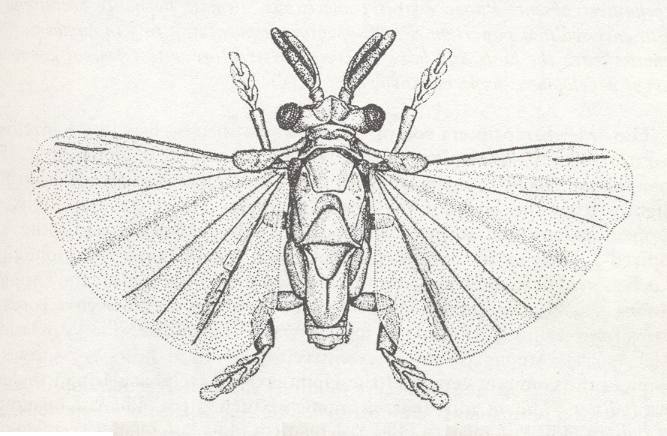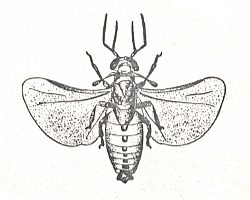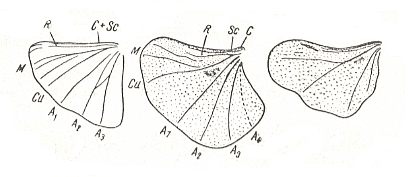

e-mail :  ( Please write in ' Subject ' entry : ' METAPHYSICS ', in order for me to be able to distinguish your mail from spam )
( Please write in ' Subject ' entry : ' METAPHYSICS ', in order for me to be able to distinguish your mail from spam )
Important Remark on the succession of treatises and subjects :
[Being now the summer of 2010, we still have to finish the exposition of all existing, and having existed, functional wing-types in insects. But we have temporarily interrupted the work on these expositions, in order to first work out further the broader physical context of living beings. This we are, at the moment, doing in a series of documents from part XV of the present Series onwards (thus from the part following upon the document that is going to be about the last wing-type (Dipterygia)). And these documents concerning the physical context of organisms and evolution are in fact treatises on Natural Philosophy. They will concern fundamental things like Time, Place, Space, Motion, Quantity, Continuity, Quality, Extensionality, Intensionality, Dimensions, and the Aristotelian (versus Mechanical) explanation and interpretation of these and other things. The findings will be integrated into our theory of the Implicate-Explicate Orders.
In the same Series the mentioned natural philosophy is further supplemented by a Theory of the unimolecular status of every organism, the Theory of Unimol. And after this, we descend to the very bottom of material reality with : the Theory of Qualitative Space-points, space-points that ultimately underly and make up the things and patterns in the Explicate Order. It will dissolve these things into 'quality-points' making up the discrete space of the Explicate Order, where "space" is the extensional aspect of things. This means that the reality of Substances (atoms, molecules, crystals, and organisms) is at its most basic level a discrete space consisting of quality-points, i.e. a space completely made up by these points. And because these points are kept at unit-distance from one another they will form a regular point-net. And precisely this opens the way to see the Explicate Order with its patterns and substances as the computational result of an overall Cellular Automaton (CA) : The current configuration or patterning of different qualitative content in discrete space, i.e. the configuration, in discrete space, of the points ('cells') as to their current qualitative content, the content of the present moment, is the result of the transformation of the configuration of these qualitatively differing points ('cells') as that configuration was (the case) in the previous moment. And these successive transformations of one configuration of 'cells's into another is governed by "rules of projection" (from the Implicate Order into the Explicate Order), i.e. CA-rules. These overall cellular automaton rules are the result of the integration of countless other rules including those that have to do with organismic strategies and also with the constitution and constancy of other Substances as they are being projected into the Explicate Order. The concept of discrete, but nevertheless 'gapless' (voidless) space will be expounded by working out an argument against even the logical possibility of the actual infinite, physically as well as mathematically. And for the successive transformations of qualitative configurations we will refer to the part [i.e. the document] having dealt with cellular automatons already in our First Part of Website.
And only when all this has been done, Natural Philosophy, including Unimol and the Theory of qualitative Space-points, we will return to insects, their wing-types, and their evolution, now within a more extended philosophical setting and background. That is, we will turn to what comes next in the present document.]
[By now, it is spring 2011, and I have finished the documents (in present Part of Website) on natural philosophy. So within due time the reader can expect the left-over documents dealing with insect wing types to be finished too.]
Most expressed example of the type (Strepsipterygia) :

Figure 1 : Stylops shannoni, N.America, Order Strepsiptera, male, enlarged.
(After PIERCE, in RICHARDS and DAVIES, 1977)
Description of the type
Morphological features
Here we have to do with an extreme degree of wing-heteronomy : The front pair is completely reduced and transformed into small appendages totally lacking any significance as a flight organ. Great differences exist as to the structure of the middle and posterior divisions of the thorax (resp. meso- and meta-thorax). The skeleton (external mechanical support structure) and musculature of the metathorax are notably enlarged, significantly exceeding the strongly contracted mesothorax. Hindwings very large (See Figure) and broad and provided with rare longitudinal veins. In the great majority of the representatives of the present type cross-veins are almost absent. The shape of the body usually is fairly specialized mechanically, with a large head, strongly enlarged thorax, and an abdomen that tapers towards its end. Body usually small, seldom of moderate size. The wings are longer than the body. See also next Figures.

Figure 2 : Elenchinus delphacophilus Ahlb. Stylopidae (Sweden). Order Strepsiptera. Length of body 1.5 mm.
(After ALBERG, in ROHDENDORF, 1949)

Figure 3 : Hindwings of Strepsiptera.
Left : Mengea tertiaria Grote, Baltic amber (Tertiary epoch). (After ULRICH)
Middle : Xenos sp. (After (?)MEIGSNER)
Right : Delphacixenos sp. (After PIERCE)
(All Figures in ROHDENDORF, 1949)
Functional features
Differentiation, connections, and representatives of the type.
Fan-wingedness clearly is a derivative of shield-wingedness (elytropterygia) namely of its basic subtype. Probably those forms of beetles were the precursors of strepsipterygia that had lost the ability of folding the hindwings together with the reduction of the elytra (the hardened forewings) gradually decreasing in size (for instance Rhipiphoridae).
This type which can only be illustrated by a single insect Order, the Strepsiptera, is very uniform indeed, and differentiation is only displayed by the formation in certain strepsipterans of more narrow wings (Elenchidae). The development of a single pair of wings in derivatives of shield-wingedness, as is fan-wingedness, indicates the appearance of features of the type of two-wingedness (dipterygia), namely of those subtypes of the latter as strepsidipterygia of certain mayflies (Brachycercidae, and others) and of certain Diptera (Simuliidae).
e-mail :
 ( Please write in ' Subject ' entry : ' METAPHYSICS ', in order for me to be able to distinguish your mail from spam )
( Please write in ' Subject ' entry : ' METAPHYSICS ', in order for me to be able to distinguish your mail from spam )
To continue click HERE for further study of the types of flight-devices in insects, Part X, Platypterygia.
Back to first part of theoretic intermezzo
Back to second part of theoretic intermezzo